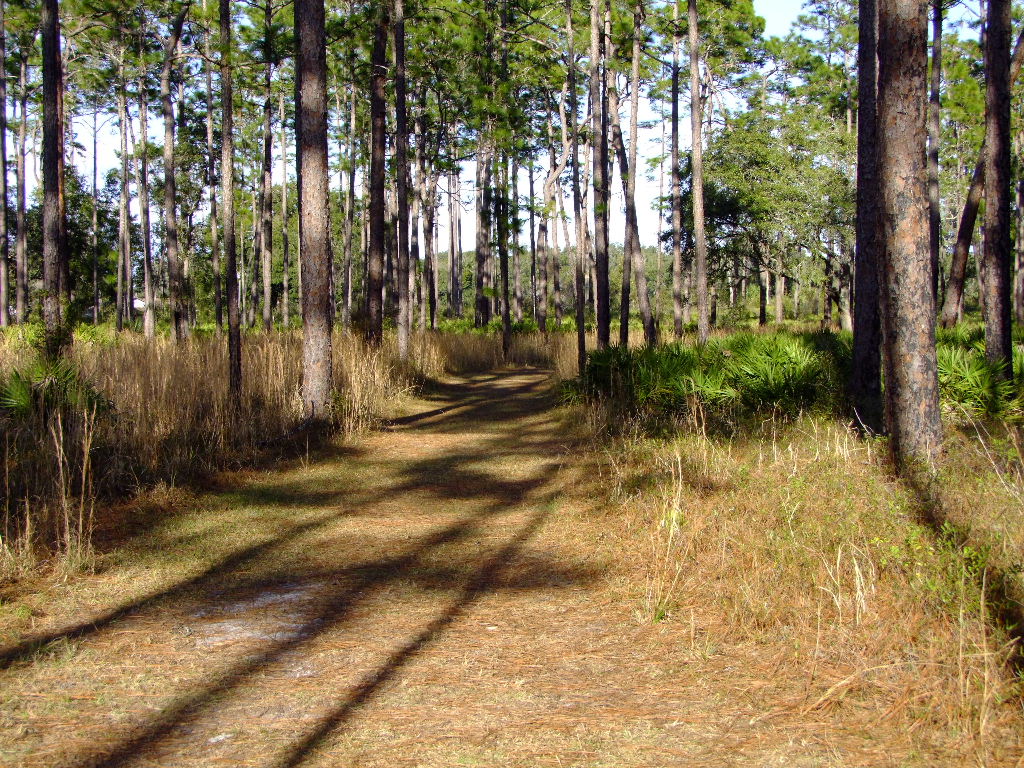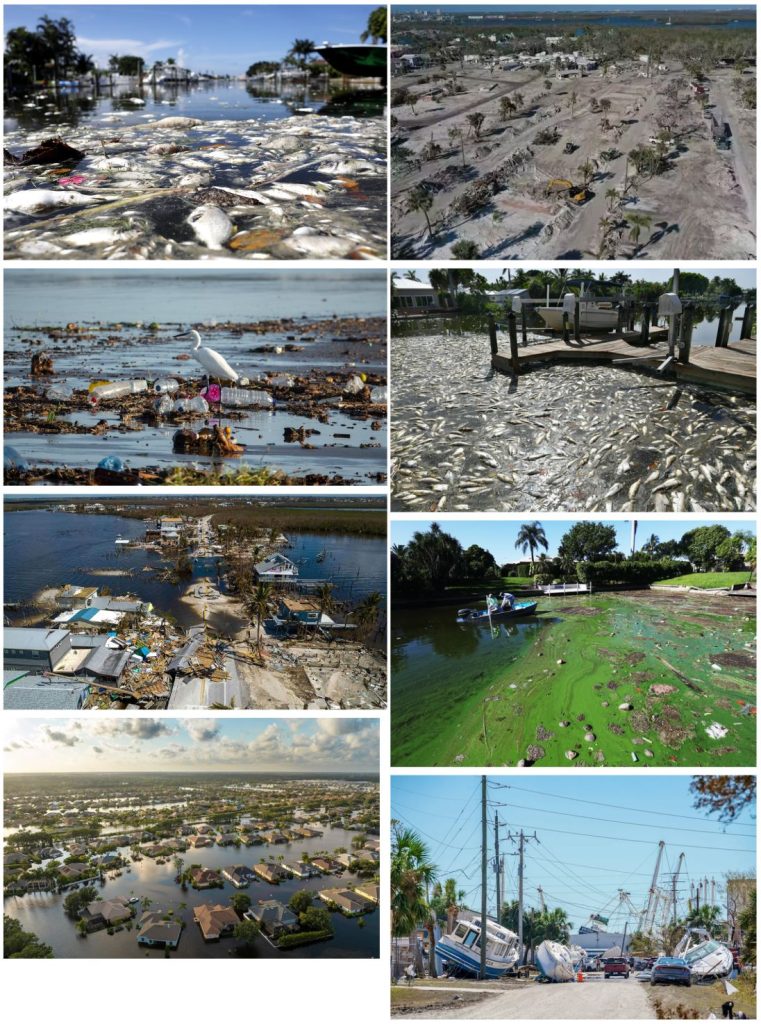Research: (The writing below is taken from linked articles.)
Pine Flatwoods – Open canopies of long leaf and slash pines with a diverse under story, once covered vast swaths of the Southeast.

Coastal dune lakes – Nearly 5,000 years old, 15 coastal dune lakes — shallow bodies of water within 2 miles of the Emerald Coast — can be found along 30A beaches. This rare phenomenon only occurs in 3 other countries around the world!

Sand Pine Scrub – These sandy, dry areas might not seem hospitable, but they’re home to many endangered species, including the Florida scrub jay, found nowhere else in the world. The scrub ecosystem, with its stunted oaks and open patches of white sand, is one of Florida’s most imperiled habitats, making conservation efforts and deep-dive ecology here particularly crucial.

Green Swamp – Central Florida is also home to the Green Swamp Preserve, a vast area of freshwater wetlands that serves as the headwaters for several of Florida’s major rivers. This mosaic of cypress swamps, marshes, and hardwood forests plays a vital role in the state’s water supply and flood control.

The Everglades – This “River of Grass” is not just a swamp, but a complex system of habitats, including saw grass marshes, tropical hardwood hammocks, and mangrove swamps. The Everglades is a testament to the importance of freshwater wetlands in Florida’s ecological balance.
The saw grass prairies of the Everglades are home to a diverse array of wildlife, including the endangered Florida panther and the American crocodile. Along the coast, mangrove forests connect land and sea, protecting shorelines from erosion and serving as nurseries for many marine species.

First-Magnitude Springs – The Sunshine State boasts the highest concentration of first-magnitude springs globally, each pumping millions of gallons of crystal-clear water daily. These springs, along with Florida’s many rivers, are not just beautiful — they’re also crucial habitats for a wide range of animal species, including the threatened Florida manatee, which relies on the warm spring waters for winter refuge.

Freshwater Wetlands – The state’s freshwater wetlands go beyond the Everglades. These areas act as nature’s sponges, filtering water and providing flood control. They’re also biodiversity hot spots, home to species like the alligator, numerous wading birds, and a myriad of plant species.

Climate change – Climate change poses perhaps the most pervasive threat. Rising temperatures are altering habitats across the state, from the Panhandle pine flatwoods to the Keys coral reefs. Sea-level rise is particularly concerning for coastal areas. It threatens to inundate low-lying habitats and push saltwater into freshwater systems. In the Everglades, this could lead to the collapse of freshwater marshes and the loss of critical wildlife habitat.
Habitat loss – Habitat loss due to urban development and agriculture continues to be a pressing issue. Florida’s ecosystems have been dramatically altered over the past century, with many habitats reduced to a fraction of their original extent. The rapid population growth in Florida has led to converting natural areas into residential and commercial developments, fragmenting habitats and disrupting wildlife corridors.
Invasive species – Invasive species pose another significant challenge. Florida’s warm climate and numerous ports of entry make it particularly vulnerable to the introduction of non-native species, from Perdido Key on the Florida Panhandle all the way to Miami along the Southern tip. The Burmese python in the Everglades is perhaps the most infamous example, but other invasives like Brazilian pepper and water hyacinth are causing widespread ecological disruption. These invasive species often outcompete native flora and fauna, altering ecosystem dynamics and threatening biodiversity.
Water management – Water management is another critical issue for the ecosystems of Florida. The draining of wetlands for agriculture and development has significantly altered water flow patterns across the state. In South Florida, the complex system of canals and levees that controls water flow into the Everglades has disrupted the natural “sheet flow” of water that once characterized this unique ecosystem.
Pollution – Pollution, particularly nutrient pollution from agricultural runoff and urban areas, continues to impact Florida’s waterways. This has led to problems like algal blooms in freshwater systems and contributed to the decline of seagrass beds in coastal areas, affecting species like the beloved manatee.
Environmental decline
What will Florida look like if it continues to be affected by these issues?

https://greenly.earth/en-gb/blog/ecology-news/climate-change-in-florida
Sea level rise – As Florida has a low elevation and is predominantly surrounded by water, the state is at high risk of flooding due to rising sea levels. This could impact freshwater resources in the state – While there is more water it is not sanitary / safe to drink.
Flooding – The increase of severe storms and rising sea levels in Florida also contribute to excessive flooding in the state. The floods from Hurricane Ian resulted in 150 indirect deaths in Florida – illustrating how severe flooding in of itself if just as dangerous as hurricanes and sea level rise.
Rising temperatures – Florida, known as the sunshine state, is known for its year round beautiful weather – but climate change in Florida is starting to threaten the once temperament temperatures that residents and vacation goers alike have enjoyed for years. This is because, as a result of climate change in Florida, the state has noticed an increase in average temperatures – as the state as saw an annual 3.5°F increase since 1950, which well exceeds the overall global average increase of 2.7°F since 1950.
Hurricanes – Hurricane Helene started on September 26th, 2024 as a Category 4 hurricane – and caused massive damage which caused power outages and even took lives to people who worked in factories.
Not even two weeks later, another strong hurricane known as Hurricane Milton, hit the usually safe city of Tampa – eliciting strong winds of 180mph. However, the most profound ripple effect of Hurricane Milton may have been the viral video of a meteorologist who grew emotional at the thought of global warming causing these horrific hurricanes – as it elicited people to pay more attention to the increasingly high risk and negative effects of climate change in Florida and the impact natural disasters will continue to have on the rest of the world.
Ultimately, climate change in Florida has been more prevalent than ever before as the effects of sea level rise, flooding, and intense hurricanes are causing cumulative damage.
From this research I have a pretty major question – If the effects of climate change continued to worsen, would Florida become more flooded, or would the increase in temperature cause the land to dry up instead? As Franek refers to the land as hot and dry, calling it the outback, the image I see in my head is of a very crisp, desert land. But the geographical and ecological evidence I have found points to a significantly different outcome.
The Sunshine State, with its low elevation and 825 miles of shoreline, make it one of the planet’s most vulnerable locations for both sea-level rise and intensified weather events.
As most of the research I find relays similar information about a flooded Florida, In my world designs I will significantly flood the surrounding areas with unenticing and grey water. The land that is seen will be crisp and scorched by the heat, to tie together the two concepts.
Reply